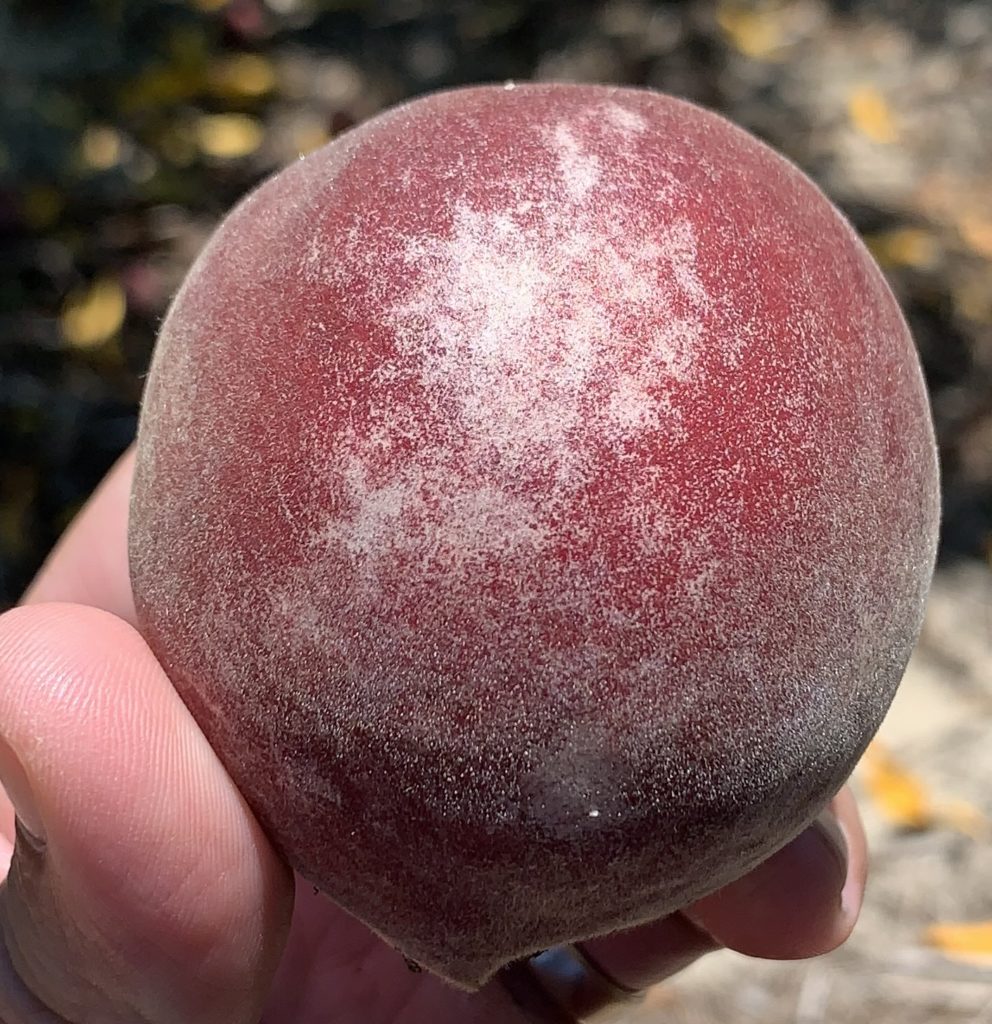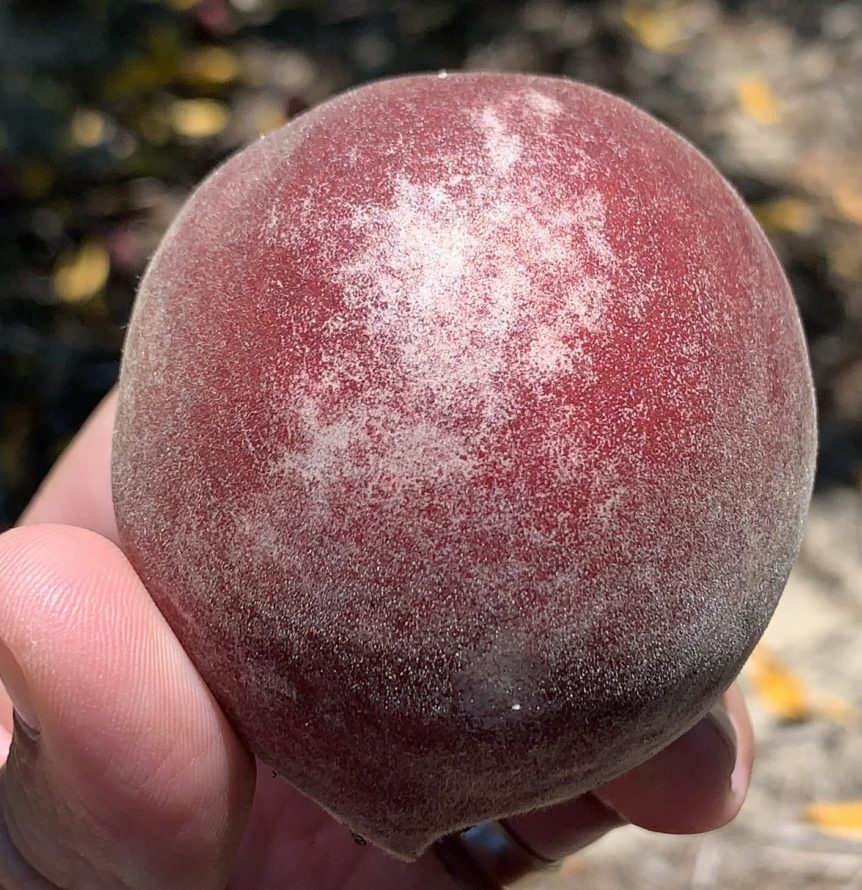By Clint Thompson
Thrips pressure has been high this year in peaches in the Southeast. Their impact started earlier than normal, according to Brett Blaauw, assistant professor at the University of Georgia (UGA) College of Agricultural and Environmental Sciences.

“In years past, we’ve had thrips, mid-season, right now with some of our darker, red-colored fruit. The thrips feed on the skin, causing a little discoloration in making the skin look silver. We call that silvering damage,” Blaauw said. “Normally, it’s a cosmetic problem, but it can cause a decrease in value in the fruit because it looks funky. Nobody wants funky looking peaches.
“This year we saw an increase in early-season damage where the thrips are feeding on the tiny little fruitlets. They’re still just feeding on the skin, but it’s damaging those cells. As the fruit begins to grow, it basically causes scars on the fruit. Not only is it funky looking, it’s also something you don’t want to eat. It’s all russetted and scarred and looks pretty gnarly.
Blaauw alerted growers of the thrips’ problem in the UGA Extension Peach Blog. The problem worsened this year because the thrips’ impact allowed disease to enter the peaches as well.
“What we’re seeing this year is some of that early feeding, because it’s creating these micro wounds to the skin, it appeared to also allow bacterial spot. It’s getting in and causing even more issues,” Blaauw said.
The key species of thrips found throughout the Southeast are the western flower thrips. Populations start to increase in abundance prior to bloom and have up to five generations every year. However, they are only a threat to peach production during bloom or just before harvest.
To make matters worse, peach growers cannot do anything now to rectify the russetting damage in peaches, but it would be smart to monitor for thrips next spring during bloom, Blaauw noted.
“I would advise that if they had problems with them this year to really take action next year. If there are thrips in the flowers, particularly the nymphs, that means there’s a breeding population which means the populations will continue,” Blaauw said.
Blaauw does not recommend methomyl (Lannate) because of its toxicity against beneficial insects, but if growers had severe russetting this year and observe thrips at bloom, Lannate LV at petal fall might be worth trying to knock down populations.
Growers have additional chemistry options that might help suppress thrips populations this year. These include Assail 30SG, Transform or Brigade WSB. It is important to rotate the classes of insecticides, utilizing different modes of action.










